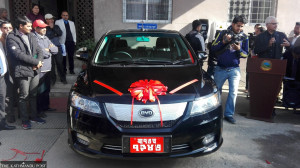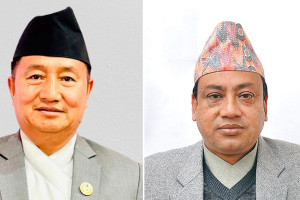Miscellaneous
Nepal's Fertility Rate: Celeb statsman makes figures come alive
The x-axis on the screen represents the number of children per woman: 1, 2, 3, 4, 5, 6.... Nepal is represented by a crimson bubble on the plane; India by a larger orange circle.
Weena Pun
The total fertility rate in Nepal then was six children per woman, and 346 babies out of 1,000 born died before reaching the age of five. In India, on average one woman gave birth to 5.9 children but 267 children out of every 1,000 born did not see the fifth birthday.
When the ‘play’ button is pressed, the bubbles move around leaving a trail that looks like strings of discs and beads. As the years count up to 2012, the bubbles stop crawling. The final coordinates are Nepal: (2.4, 42) and India: (2.5, 56).
The numbers by themselves are boring, dull, vapid. Except that jumping and running along with the bubbles off-screen is a man the world knows as the greatest story-telling statistician: Hans Rosling, a Swedish medical doctor who founded Gapminder, a data visualising tool, and sold it to Google.
In his rectangular now-hipster glasses and tailored black suit with a Swedish Academy of Sciences tiepin, Rosling follows the bubbles’ trajectories and screams with excitement, “Look, look. Look at Nepal catching up.”
Rosling had already tickled Nepalis’ vanity by greeting and introducing himself in Nepali at an event jointly organised by Nepal Planning Commission and Unicef. He proceeds to massage that ego by opening another slide on the trendalyser software a team comprising his son and daughter-in-law coded. This time the x-axis is adjusted for income per person in purchasing power parity. The other dimensions remain unchanged.
Rosling hits ‘play’ and the journeys of the two circles begin. When they stop, Rosling points to an incredible story that could have easily been lost had the data been on pages of excel sheets.
“Nepal is the only country in the world that with just a little over $1,200 per capita income has managed to bring down the under-five mortality rate to 42. Nepal is a world champion in that respect.”
But Nepal is lagging behind in economic growth, reminds the data magician. Comparing Nepal’s trajectory on the slide to that of China’s, as well, Rosling suggests that it is now time to fulfil the “enormous material needs that exist in Nepal.”
The graphs show that Nepal is now where China was in its early 1980s, after which the giant northern neighbour set sail for economic advancement.
“You have social development foundations in place now just like China did in 1980s. The children are healthy and the family is small. Now use this social progress for economic development which in turn furthers the social development,” says an animated Rosling, who was in Nepal 42 years ago as a tourist.
“There was dignity in scarcity then,” remembers the doctor, as he takes a break from statistics to share memories of that era.
The photos taken then show his wife, Agneta, and himself backpacking through Helambu.
Agneta used to write in her journal about the women here, recalls Rosling. “She used to write that a woman would be all by herself in her house. But we could still talk to her about getting shelter for the night and she would finalise the deal without having to wait for the husband.”
As Nepal prepares to modernise itself, benefit from its “centrally-located position in growing Asia”, Rosling stresses that Nepal not lose sight of the fact that an increase in GDP does not provide everything, for instance gender equity.
“Gender equity does not come with economic independence. It is a separate fight. Be harsh about it as you fight for economic growth for your children.”
And going back to the numbers, he says, “Data are important but they are not the same as understanding.”




 26.43°C Kathmandu
26.43°C Kathmandu












